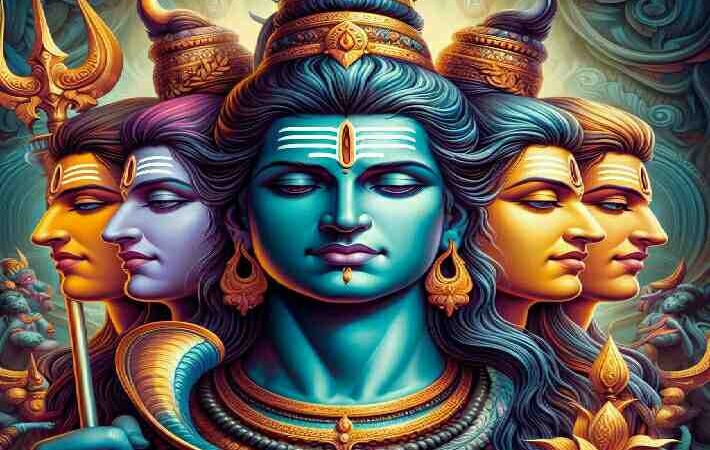Mitra:Symbol of Amity and Truth in Hindu Texts

Mitra, a Hindu deity, is often recognized as one of the Adityas (12 Adityas), sons of the goddess Aditi. Over time, his significance has undergone shifts. In ancient inscriptions like the Mitanni, Mitra is invoked as a guardian of treaties, emphasizing his role in maintaining harmony and agreements. Within the Rigveda, Mitra predominantly appears in conjunction with Varuna, forming the compound Mitra-Varuna. This compound essentially embodies the attributes of Varuna alone, particularly as the principal guardian of ṛtá, representing “Truth” and “Order.” As Vedic texts progress, Mitra’s association with dawn and the morning sun grows, contrasting with Varuna’s connection to the evening and eventually the night. In later Vedic and post-Vedic texts, Mitra’s prominence diminishes, but he evolves into a patron deity of friendship. His identity as “friend” underscores his aversion to violence, even in sacred contexts, reflecting his role in fostering amity and peaceful relations among beings.

Throughout his evolution, Mitra’s essence remains tied to concepts of unity, harmony, and friendship, emphasizing the importance of upholding truth and maintaining peaceful bonds among individuals and communities.
Nomenclature
The name Mitra comes from an old Indo-Iranian word meaning something that brings people together. In ancient times, it meant things like agreements or promises. Mitra was important for protecting these agreements in ancient texts like the Rigveda and Mitanni treaty. Later on, especially in India after the Vedas, Mitra came to be seen as a symbol of friendship. In many Indian languages, “mitr” simply means “friend.” And in languages like Marathi or Hindi, the word for a female friend is “maitrin” or “mitra.”
Mitra in the Vedas
In the ancient Rigveda, Mitra and Varuna are often mentioned together as a divine pair, sometimes referred to as Mitra-Varuna. They are depicted similarly, with Varuna being more prominent. They are described as youthful, wearing radiant clothing, and ruling as monarchs and protectors of the entire world from a golden palace with numerous pillars and doors. Mitra-Varuna govern the heavens, the earth, and the space in between, controlling elements like rain, rivers, and the sun’s movement. They have the power to bring rain and prosperity to the land but can also bring disease to those who disobey them. Despite being considered asuras, they are also addressed as devas, emphasizing their divine nature.
Mitra is sometimes depicted independently, but he shares many attributes with Varuna, such as upholding cosmic order and supporting humanity. Mitra’s unique trait is his ability to lead and organize people. While Varuna is associated with regulating celestial bodies and the night, Mitra is linked to dawn and the rising sun. In later Vedic texts like the Atharvaveda and Brahmanas, Mitra’s connection to sunrise becomes more pronounced, contrasting with Varuna’s association with the evening and night.
In the Brahmanas, Mitra is seen as representing the priesthood or counsel, while Varuna represents royal power or authority. This distinction highlights their roles in guiding both spiritual and worldly affairs.
Mitra in Post-Vedic Texts
Mitra, a character in Hindu tales such as the Ramayana and Mahabharata, isn’t as highlighted as some other gods. He’s known as a solar deity and one of the sons of Aditi and the sage Kashyapa. According to the Bhagavata Purana (Srimad Bhagavatam), his wife is named Revati, and they have three sons named Utsarga, Arishtha, and Pippala.
In these stories, Mitra often appears alongside Varuna, another deity. There’s a fascinating tale where both gods were captivated by a celestial nymph named Urvashi. However, Urvashi preferred Varuna over Mitra, leading to a curse from Mitra. It’s said that they both participated in a yajna, a ritual offering, performed by Vaivasvata Manu.
There are other interesting stories about Mitra as well. For instance, during the Devasura war, he played the role of a milkman for the gods. Additionally, figures like Pandava King Yudhishthira and Akrura are said to have worshipped Mitra.
These tales give us insights into the lesser-known aspects of Mitra’s character and his significance in Hindu mythology.
Celebrating Mitra
In the Atharvaveda, there’s a connection between Mitra and the sunrise. Hindus honor Mitra during sunrise prayers. These prayers, called morning upasthaana, are recited after contemplating the Gayatri mantra. They include Vedic verses dedicated to Mitra.
Mitra is also revered during the Mitrotsavam festival in Hinduism, dedicated to the Sun god Surya. Mitra ensures the orderly journey of Surya across the sky, as mentioned in Rig Veda verses.
Bengal celebrates Mitra in the month of Agrahayan (November-December). The worship begins on Kartik Sankranti, the last day of the Kartik month in the Bengali calendar. Throughout the month, devotees worship Mitra Dev, locally known as Itu Thakur.
This puja is observed as a Vrata, particularly by women. It starts with planting various seeds and plant roots in a clay pot filled with soil. Every Sunday of the month, they worship and water the plants. Finally, on Agrahayan Sankranti, they immerse Itu Thakur into the water before sunset, marking the end of the ritual.





